Post-stent chest pain, revisited
Heart Sisters
JULY 28, 2024
Heart patients with persistent or recurrent post-stent chest pain present “an unmet clinical need”, according to the European Journal of Cardiology.
This site uses cookies to improve your experience. By viewing our content, you are accepting the use of cookies. To help us insure we adhere to various privacy regulations, please select your country/region of residence. If you do not select a country we will assume you are from the United States. View our privacy policy and terms of use.
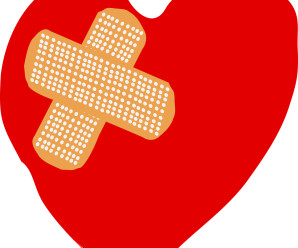
Heart Sisters
JULY 28, 2024
Heart patients with persistent or recurrent post-stent chest pain present “an unmet clinical need”, according to the European Journal of Cardiology.

Med Page Today
MAY 19, 2024
(MedPage Today) -- PARIS -- Whether a person had chest pains resolved by angioplasty hinged on the nature, not the severity, of their presenting symptoms, an ORBITA-2 analysis showed. Investigators found two groups more likely to benefit from.

All About Cardiovascular System and Disorders
APRIL 10, 2024
It is not always possible to be certain about the origin of chest pain just by its characteristics as the variation between individuals is quite a bit. A medical opinion should be sought in case of any significant chest pain so that important ailment is not missed. A pain lasting more than 30 minutes is usual.
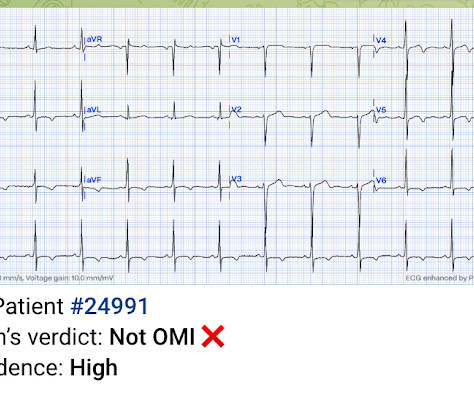
Dr. Smith's ECG Blog
FEBRUARY 14, 2024
A 41-year-old male who presents to the emergency department with chest pain. Patient reports approximately 2 hours prior to arrival he developed a sharp chest pain that radiates into his left arm and left lower leg. Describes the radiating pain as numbness/tingling. No shortness of breath. No recent travel.

Dr. Smith's ECG Blog
MARCH 13, 2024
Written by Willy Frick A man in his early 40s with BMI 36, hypertension, and a 30 pack-year smoking history presented with three days of chest pain. He described it as a mild intensity, nagging pain on the right side of his chest with nausea and dyspnea. This is WHY refractory angina should prompt immediate angiography.
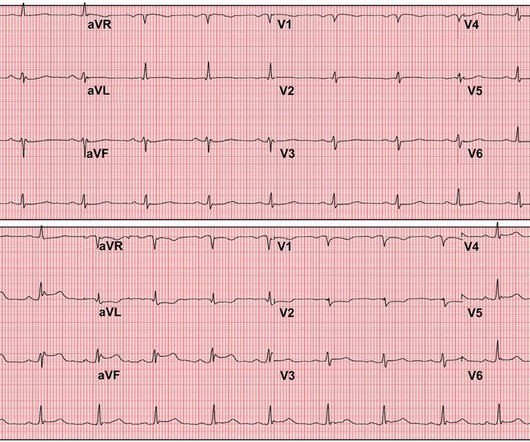
Frontiers in Cardiovascular Medicine
JULY 5, 2024
BackgroundVasospastic angina usually presents with intermittent episodes of chest pain. It can rarely be associated with the perception of phantom odors.Case summaryA 69-year-old woman presented for evaluation of intermittent shortness of breath and chest pain.
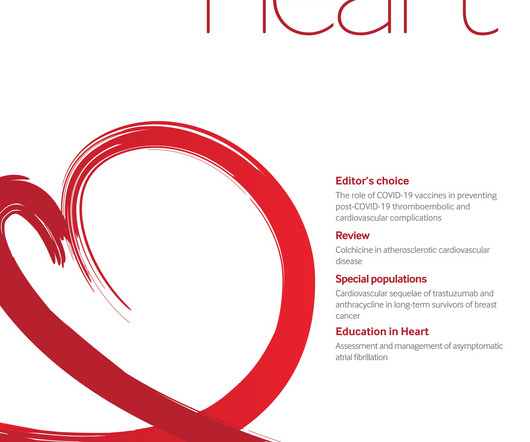
Heart BMJ
APRIL 15, 2024
Clinical introduction A man in his 40s with a history of hyperlipidaemia presented with intermittent, dull left-sided chest pain for 2 weeks that was not consistently exertional. Physical examination, an ECG, basic laboratories and a chest X-ray were unremarkable. He did not smoke or use alcohol or illicit drugs.
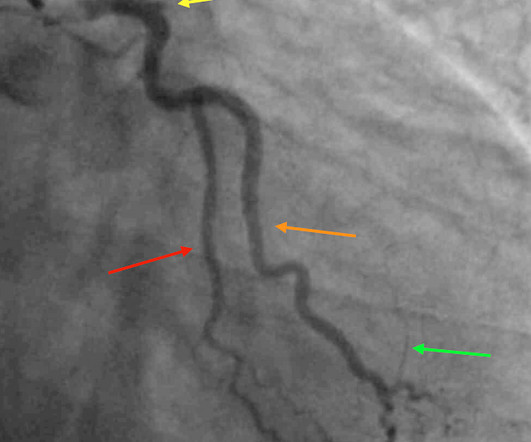
Dr. Smith's ECG Blog
AUGUST 9, 2024
Written by Colin Jenkins and Nhu-Nguyen Le with edits by Willy Frick and by Smith A 46-year-old male presented to the emergency department with 2 days of heavy substernal chest pain and nausea. The patient continued having chest pain. These diagnoses were not found in his medical records nor even a baseline ECG.

American College of Cardiology
APRIL 8, 2024
A coronary sinus reducer (CSR) may lead to a significant reduction in the number of angina episodes in patients with chronic chest pain, but it was not superior to a placebo device for improving myocardial blood flow, according to the results of the ORBITA-COSMIC study, presented during a Late-Breaking Clinical Trial session at ACC.24

Dr. Smith's ECG Blog
APRIL 22, 2024
A 50-something male with hypertension and 20- to 40-year smoking history presented with 1 week of stuttering chest pain that is worse with exertion, which takes many minutes to resolve after resting and never occurs at rest. At times the pain does go to his left neck. It is a ssociated with mild dyspnea on exertion.

Heart BMJ
JANUARY 29, 2024
Clinical introduction Vignette A man in his 40s presented to our emergency department with sudden onset of severe central chest pain radiating to his left arm. There was no antecedent angina. He was sweaty, clammy and had accompanying breathlessness. There was no medical history and he was not on any medical treatment.
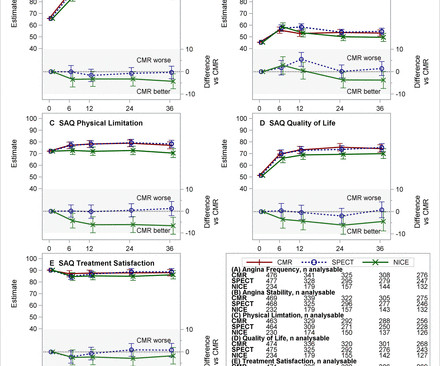
Open Heart
MAY 2, 2023
Aims Guidelines for suspected cardiac chest pain have used historical risk stratification tools, advocating invasive coronary angiography (ICA) first-line in those at highest risk. 12) Questionnaire and EuroQol-5 Dimension Questionnaire were recorded.
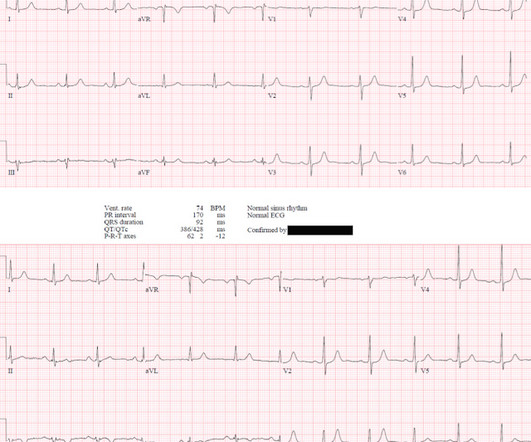
Dr. Smith's ECG Blog
APRIL 22, 2022
Written by Jesse McLaren, with comments from Smith and Grauer A 60 year old presented with three weeks of intermittent non-exertional chest pain without associated symptoms. A prospective validation of the HEART score for chest pain patients at the emergency department. Backus BE, Six AJ, Kelder JC, et al.

Dr. Smith's ECG Blog
MARCH 4, 2023
This is NOT Wellens because the T-wave inversion is DURING the pain (not after -- Wellens' is a syndrome of TWI after an episode of angina is resolved). While I still had questions about this case given the limited information provided ( ie, Was chest pain in this younger adult diabetic from acute PE?

Frontiers in Cardiovascular Medicine
OCTOBER 7, 2024
Patients experiencing LVOTO may manifest symptoms such as angina, syncope, etc. Our report describes two cases of SVS treated with endocardial ablation to improve LVOTO.Case reportCase 1: A 74-year-old female patient with angina and syncope was admitted to the hospital and diagnosed with SVS by transthoracic echocardiogram.

DAIC
MAY 2, 2024
Results from the open label roll-in cohort of patients having chronic myocardial ischemia with refractory angina showed an average increase in exercise tolerance of 107 seconds and an average of 82% reduction in angina episodes at the primary six-month follow-up endpoint compared to before receiving the study treatment.
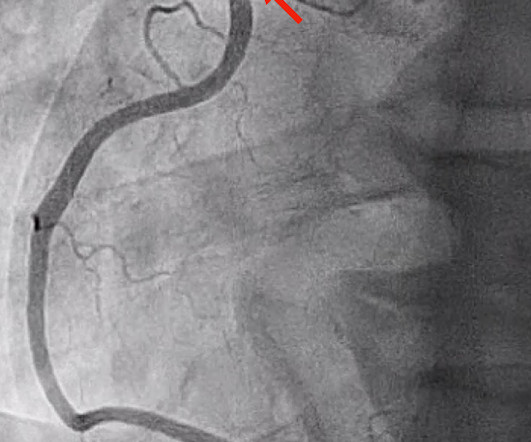
Dr. Smith's ECG Blog
MARCH 17, 2024
He also complained of intermittent mild chest pain radiating into into both shoulders and his back, as well as occasional unexplained sweating. In addition, his cardiologist suspected vasospastic angina and therefore started amlodipine. He had no further chest pain. Clear inferior and posterior reperfusion.

The British Journal of Cardiology
JUNE 11, 2024
Manifestations of CVDs, such as chest pain, abnormal serum markers, unstable angina, myocardial infarction (MI), myocarditis, and new-onset hypertension, were documented. The most common symptom was left hemithorax and interscapular pain (317 patients, 46%).
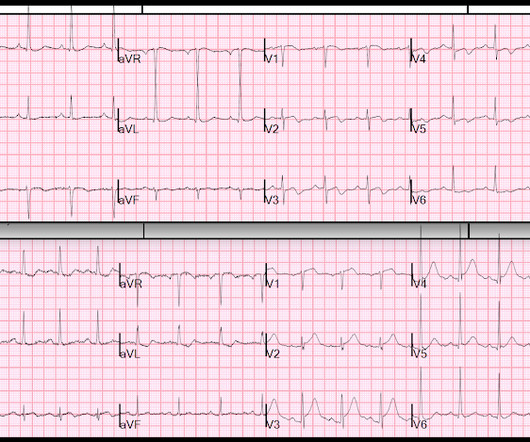
Dr. Smith's ECG Blog
JUNE 28, 2018
He had suffered a couple bouts of typical chest pain in the last 24 hours. This ECG (ECG #3) was recorded immediately after the last episode of pain spontaneously resolved. The pain had lasted about one hour. Case A 40-something male presented to triage. There are classic Wellens' waves in V2-V5. Am Heart J.
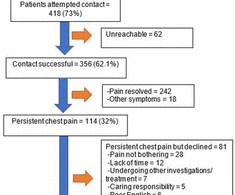
Open Heart
MAY 11, 2022
Objective The study evaluated the feasibility of mindfulness-based cognitive therapy (MBCT) in patients with non-cardiac chest pain by assessing their willingness to participate and adhere to the programme, and for these data to help further refine the content of MBCT for chest pain. ±7.3).

Coronary Artery Disease Journal
JUNE 3, 2024
Objectives There are few reports regarding the prognosis in patients with obstructive coronary artery disease (OCAD) and vasospastic angina (VSA). This study investigated the clinical characteristics and clinical outcomes in patients with VSA and OCAD, especially regarding provoked spasm phenotypes and sites.

Circulation
NOVEMBER 11, 2024
Background:Although intracoronary acetylcholine (ACh) provocation testing is a guideline-recommended invasive standard for the diagnosis of vasospastic angina (VSA), ACh tests are largely underused in clinical practice globally. Circulation, Volume 150, Issue Suppl_1 , Page A4139995-A4139995, November 12, 2024. Recently, Rinaldi et al.

Open Heart
AUGUST 25, 2024
Background On the one hand, the primary coronary slow flow phenomenon (CSFP) can cause recurrence of chest pain, prompting medical examinations and further healthcare costs, while on the other hand, it can lead to myocardial infarction, ventricular arrhythmia and sudden cardiac death.
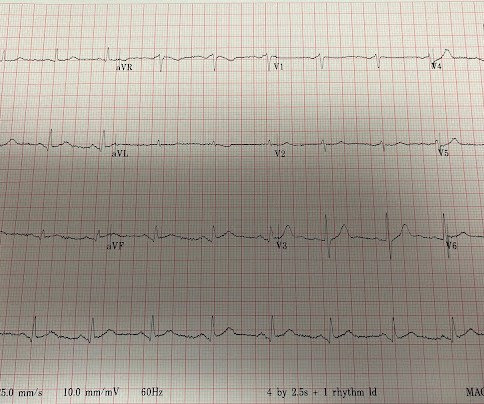
Dr. Smith's ECG Blog
JULY 2, 2023
Chest pain or discomfort) What do you think? The total duration of chest pain was 30-45 minutes. I said that this is unstable angina until proven otherwise. Thus, Unstable Angina. Here was my response: "Suspicious for inferior posterior OMI. I said "give aspirin, heparin, and troponins will be positive."

Dr. Anish Koka
MAY 16, 2023
This means that at every age, the probability a man complaining of chest pain has significant underlying coronary disease as a cause of this chest pain is much higher than a woman complaining of chest pain. The results of this dataset by age and gender follow.
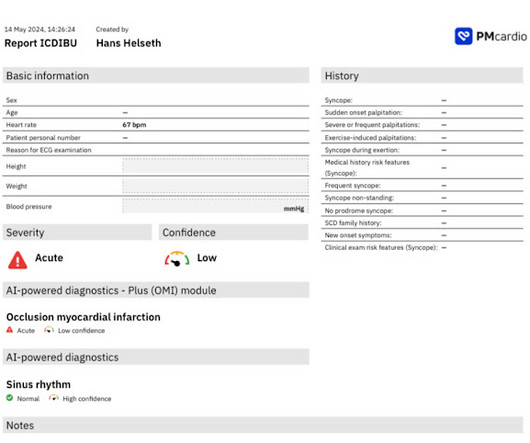
Dr. Smith's ECG Blog
MAY 20, 2024
A 63 year old man with a history of hypertension, hyperlipidemia, prediabetes, and a family history of CAD developed chest pain, shortness of breath, and diaphoresis after consuming a large meal at noon. He called EMS, who arrived on scene about two hours after the onset of pain to find him hypertensive at 220 systolic.

Heart BMJ
JANUARY 29, 2024
1 2 The exercise ECG, once the stalwart of chest pain evaluation, has lost favour over the last two decades in most heart centres due to its relatively poor discriminatory ability and reliance on patients to walk on a treadmill.
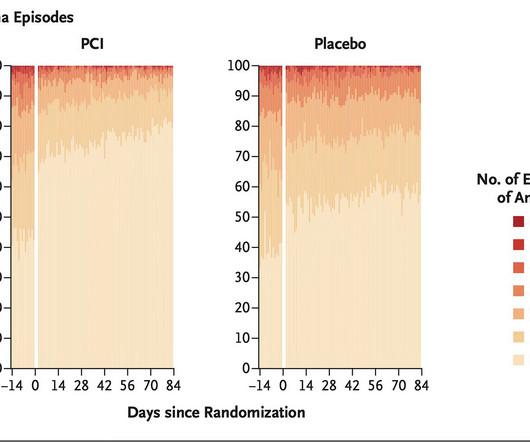
Dr. Paddy Barrett
DECEMBER 5, 2023
Whether stenting a narrowed coronary artery improves symptoms such as chest pain (angina) or shortness of breath is a very different question. Share Angina The classic definition of angina involves the sensation of tightness in the centre of the chest that is brought on with exertion and is relieved with rest.
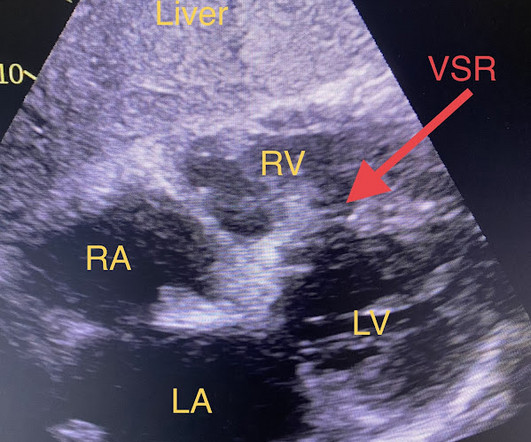
Dr. Smith's ECG Blog
SEPTEMBER 5, 2024
Because previous ischemia induces myocardial preconditioning, decreasing the likelihood of transmural myocardial necrosis and myocardial rupture, patients with evidence of diabetes mellitus, chronic angina or previous MI are less likely to experience a rupture. Not all patients with acute ( or recent ) MI have chest pain with their event.

Dr. Prateek Bhatnagar
MAY 11, 2022
The patient was suffering with angina (chest pain) since 2002. He was now getting chest pain even at rest and his life was at grave risk. He received these 12 stents on 5 different occasions at 5 different hospitals of the twin cities. The last 3 stents were placed just 6 months back but were not working.

Dr. Prateek Bhatnagar
SEPTEMBER 6, 2023
Hemant, a resident of Delhi NCR, had developed chest pain (angina). However, within 3 months of stenting, he developed increasing chest pain. He underwent coronary angiography at Delhi, which showed severe blocks in left main and other coronary arteries of his heart.
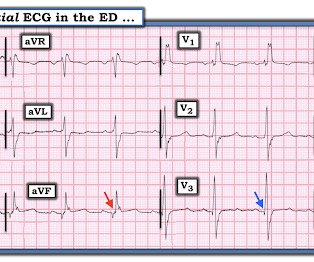
Dr. Smith's ECG Blog
JANUARY 31, 2020
A middle-aged man complained of 15 minutes of classic angina that resolved upon arrival to the ED. The patient's chest pain had resolved by the time of the ECG 2. But it does prove that the patient has coronary disease and makes the probability that his chest pain is due to ACS very very high. The T-waves are flat.

Circulation
NOVEMBER 11, 2024
The confirmation cohort, which was obtained from the National Institute of Health, consisted of 3315 patients with normal Bruce protocol treadmill stress test results in the Prospective Multicenter Imaging Study for Evaluation of Chest Pain (PROMISE) Trial. RHR and peak exercise heart rates (PHR) were tabulated. x age in years).Results:The

Journal of Cardiovascular Electrophysiology
MARCH 11, 2024
Methods and Results A 67-year-old male with a history of LAAC was referred to our emergency room with recurrent chest pain and palpitations and was diagnosed with ischemic angina pectoris.
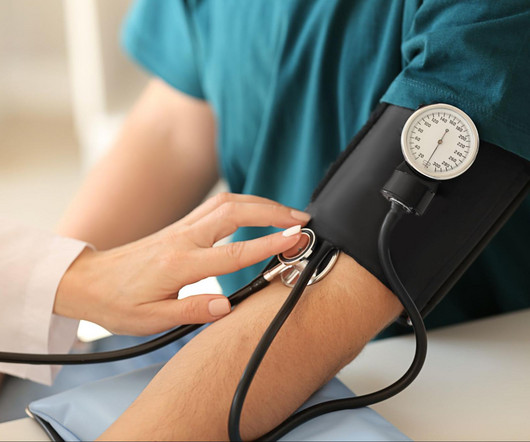
MIBHS
JULY 31, 2024
This can lead to chest pain (angina) and increase your risk of heart attack or stroke, especially if you already have underlying heart disease. Reduced Blood Flow Stress can cause your blood vessels to constrict, reducing blood flow and oxygen delivery to your heart and other organs.

MIBHS
OCTOBER 15, 2024
For example, if a coronary artery becomes blocked due to plaque buildup (a condition known as coronary artery disease), the heart muscle may not receive enough oxygen, leading to chest pain (angina) or, in more severe cases, a heart attack. CAD is one of the leading causes of heart attacks.

DAIC
MAY 14, 2024
The impact of this narrowing can ultimately result in angina (chest pain), which has been shown to double the risk of major cardiovascular events,1 as well as myocardial infarction ( heart attack ) or even death. Use Heart to Act on Angina. Available at: [link]. Accessed May 2024.

Dr. Smith's ECG Blog
DECEMBER 14, 2018
This appears to be a classic Wellens' ECG, Pattern A, with terminal T-wave inversion in V2-V4, preserved R-waves, and it appears to be Wellens' syndrome, as it occurred after resolution of typical angina pain. The patient remained pain free. Unstable Angina still exists 2. Case continued All troponins were negative.

Dr. Prateek Bhatnagar
AUGUST 21, 2023
Patient Mr. Paras Ram was having unstable angina (chest pain at rest) at his native place. No cuts were made on the legs. The bypass operation was done without open heart surgery, without any cuts on heart and without stopping the heart. All his coronary arteries were heavily calcified.
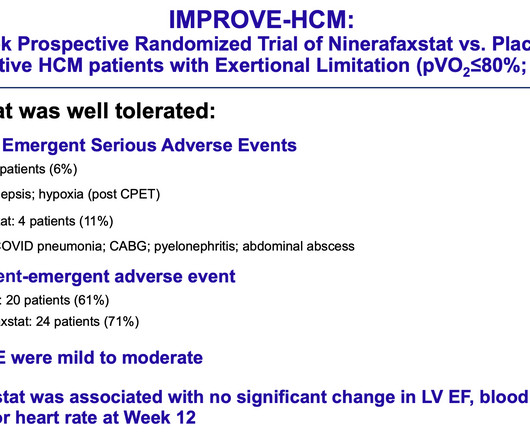
DAIC
APRIL 9, 2024
Most people with nonobstructive HCM have no symptoms, but about 40% experience symptoms such as chest pain, shortness of breath, abnormal heart rhythms, dizziness, fainting and swelling, which often worsen over time. Maron said that a larger phase 3 trial would help shed light on the magnitude of the drug’s potential benefits.
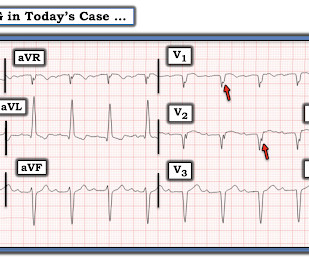
Dr. Smith's ECG Blog
APRIL 18, 2024
Written by Jesse McLaren A 70 year old with prior MIs and stents to LAD and RCA presented to the emergency department with 2 weeks of increasing exertional chest pain radiating to the left arm, associated with nausea. 1] European guidelines add "regardless of biomarkers". But only 6.4%
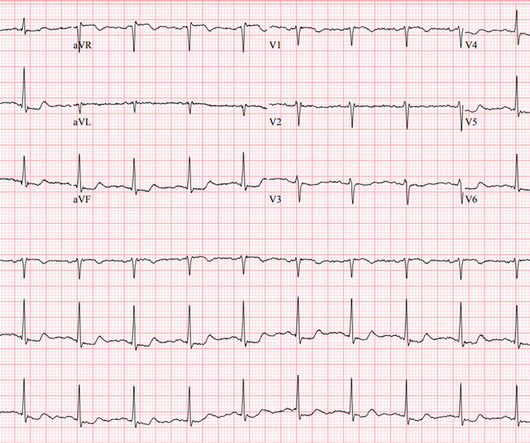
EMS 12-Lead
JULY 24, 2023
But the symptoms returned with similar pattern – provoked by exertion, and alleviated with rest; except that on each occasion the chest pain was a little more intense, and the needed recovery period was longer in duration. 3-vessel disease with a culprit lesion [Typical angina, multiple risk factors] b. Anemia [Normal Hgb] g.
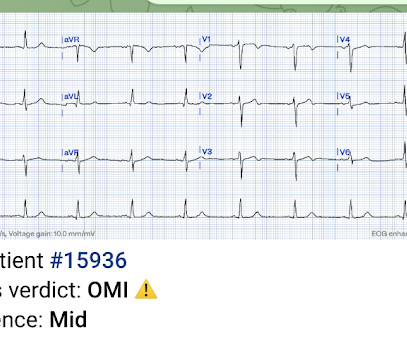
Dr. Smith's ECG Blog
MARCH 9, 2017
Case A 42-year-old lady presented to the ED with complaints of intermittent episodes of chest pain associated with shortness of breath for the last 2 days. This was her ECG (it is unclear if this was with or without pain): Computerized ECG Read: “Normal sinus rhythm. Unstable Angina still exists. Thanks, Sam! Normal ECG.”

Dr. Sanjay Gupta
DECEMBER 19, 2022
She asked me why I felt she had had a heart attack and I explained to her that she had had chest pains and the blood test indicating damage to the heart was elevated and that was all we needed to say that she had had a heart attack. On the basis of these findings we told her that she had suffered a heart attack.
Expert insights. Personalized for you.
We have resent the email to
Are you sure you want to cancel your subscriptions?


Let's personalize your content